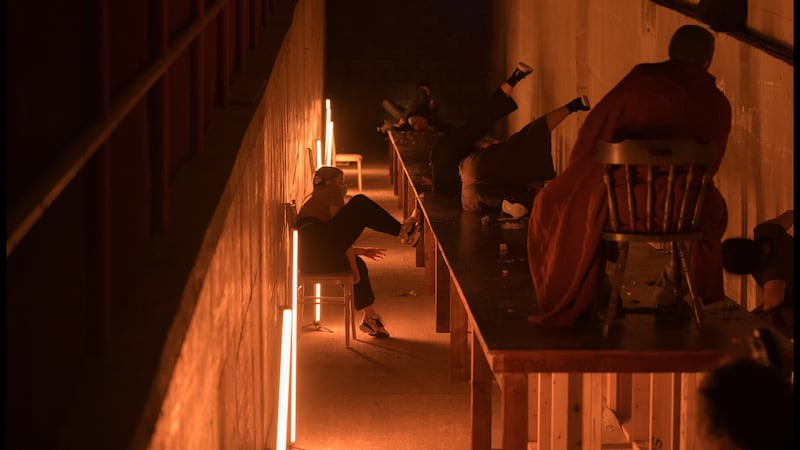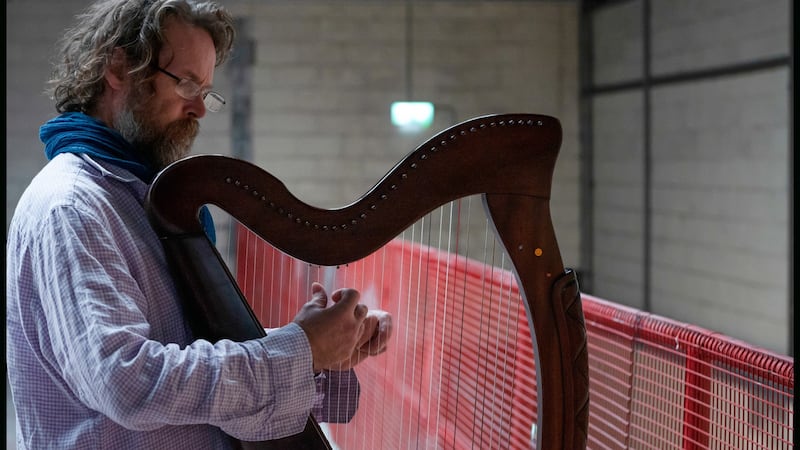Galway 2020: Óró…
An Cheathrú Rua, Galway
This immersive production by Ealaín na Gaeltachta, commissioned by Galway 2020, defies categories, incorporating music, dance, theatre, with elements of visual art, and its themes of language, survival, identity, cultural diversity are more an evocative meditation than a narrative.
The cast of 10 from five countries with minority languages, directed by Darach Mac Con Iomaire, are musicians (including composer Liam Ó Maonlaí), actors, dancers, poets and visual artists from Scotland, the Basque Country, Cornwall, Friesland and Ireland; they lived in pods in Carraroe, rehearsing on closed sets, a mid-pandemic feat of transnational art-making.

In the cavernous former factory in Connemara there’s a palpable feeling of being on the edge of Europe, on the edge of experience, and melding minority cultures. Each audience pod sits on separate benches, occasionally led into different rooms.
Taran Spalding-Jenkin in a glass booth struggles to get out, making offerings to an oblivious official. Sibéal Davitt moves to music, contemporary morphing into a sort of joyous pan-Celtic dance. We look down onto a 10-metre long sunken table strewn with dead roses, as manically laughing guests gradually slither under the table and escape a seeming tyrant asleep. Diarmuid De Faoite has an anguished two-way bureaucratic interrogation. Florescent bulbs and handheld lamps light the action. We are led down a corridor of miniature nature paintings, spotlighted.
Periodically performers turn on taps; the sound of the water behind the music is enveloping, and the pools that build up evoke flooding and climate crisis, then, with tiny translucent boats on it, Mediterranean migration. The harmonies are beautiful; Josie Duncan’s singing is heavenly. In a stunning choreography Amaia Llizaran dances solo in water, struggling and pained. There are pipes, piano, whistle, harp, guitar, banjo; the fusion score is by turns leaping, lyrical, lamenting.

Characters converse in different languages, seemingly understanding each other; it’s like turning Friel’s Translations love scene on its head, where Maire and Yolland speak to each other in Irish and English, uncomprehending, with the audience suspending disbelief as the scene plays in English.
Though it might have benefited from being shorter than two hours, Óró is a striking evocation of transience, change, struggle, immigration, separation. Minority European languages feature, including Irish, and if the audience doesn’t understand the words, language appropriately becomes another sound in a feast for the senses, joining visual, movement and music.










